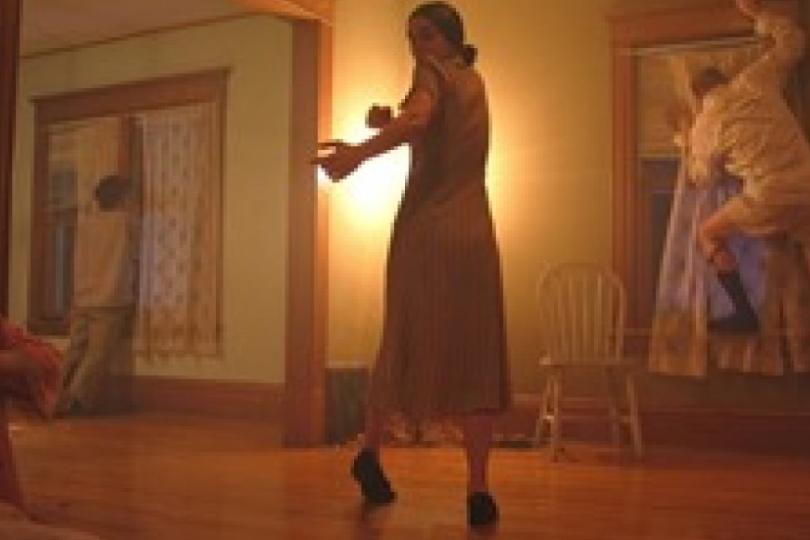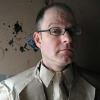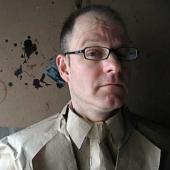Exploring change for the awkward arts zealot: Personal
Editorial

Editor's note: We recently put out a call for theater artists to talk to us about the kinds of change they want to see in the local arts scene. Skewed Visions co-founder Charles Campbell accepted the challenge with a four-part series on change from a personal, local, global and survival perspective. We're pleased to present Charles' first installment, on personal change.
1. Personal
Change in the context of the personal history of Skewed Visions as told by one of its idiots
Coming to terms with change. Our history.
There’s a little story I’d like to tell, and like all stories it is mostly a lie. I’m going to tell it anyway because maybe it can serve a useful purpose. If only one tender young artist reads these words and decides maybe being a Successful Artist isn’t really what they had in mind, I will be vindicated and may even be forgiven for lying to children.
The early days
When we (Gülgün Kayim, Sean Kelley-Pegg, and I) started Skewed Visions in 1996 or 1997, depending on when you ask, we were finishing graduate school at the University of Minnesota. Wanting to help each other realize each other’s work, we founded our own company. It was what you did. We wanted to make work we didn’t often see: work we found exciting, engaging, and stimulating – both viscerally and intellectually. Within four months we had a first gig, and within a year we had our third, if you don’t count the by-mail performance. Site-specific before site-specific knew what it was. By 2000 we had taken a couple of actors as company members. By 2002 we had redrafted our mission and abandoned them. What a mess, no?
I was excited. After all, I had finished a million years of school, and was taking direct part in making performance work with interesting people that was deeply thrilling me every day and long into the nights. In fact, sometimes I would wake up in the wee hours with my heart thrilling little thrills of…thrill. Or was that feeling more accurately described as panic? Because we had thought we were a theater company, but – as it turned out after a little (expensive) organizational therapy – we were definitely not a theater company.
How do you make your work?
So what were we? More importantly, how could we keep doing what we were doing? In order to do the second it seemed we needed to know the first. Every time we wanted to do a show we had to call a zillion landlords, searching frantically for unused space that fit out aesthetic needs. We had to fit a piece as it existed in one of our heads into this space so that the space and the idea could both stand up and be recognized, and do this in a couple weeks. Our audiences were limited both by the size of the spaces and by the length of runs. As it took us anywhere from 12-24 months to develop a show, the math just wasn’t working out. From the perspective of my bed at 3 am, things didn’t look good. In fact, even in the fresh light of day 1+1 still didn’t amount to more than 2. It is not enough. It was never enough. More therapy!
And the advice we got: it won’t work.
More math
So what did we decide to do (as if this thing were under our complete control)? Of course: do even more things, but all at once! This was a mathematical answer to a mathematical problem. More work, more people, more attention equals more money – voilà, survival! But it also had an aesthetic wrinkle, in that doing more things simultaneously meant extending an experience over space and time into a broader and deeper encounter with the performed ideas we were working with. So we did The City Itself, a series of three separate works united by a common theme: intimacy in the urban environment. The Car, in the backseats of three different cars, drove audiences around different areas of Minneapolis with the performers driving, getting in and out of the cars, blurring the line between reality and our co-optation of its parts; Side Walk, an audio tour through the Lyn-Lake neighborhood, then in transition, layered truth and fiction in shifting strata of presence; and The House, installed in a residence as a trip through domestic memory. Exhausting, but satisfying. We even got an article in TDR about it. So we planned to do it again.
But you’re “site-specific”!
This next was a series of three pieces done simultaneously, now in the “witches hat” water tower in Prospect Park. We got a grant for this one, called Days and Nights. However, the idea developed into one in which the water tower was really not the best option. We were presented with a choice by the funder: perform the piece in the water tower, or lose the funding. We chose to go elsewhere. Yep, gave up the money and ended up in the unused office building of the former Grain Belt Brewery on Marshall Street. (Different funding.) There we mounted three radically independent stories made interdependent: a mediation on alienation (A Quiet Ambition), a meditation on Bruno Schultz and his artwork (The Hidden Room), and a puppet fairytale that explored both fairytales and elements of the other two pieces, all filmed and projected inside the brewery office building (Time For Bed). Experienced sequentially or independently, they provided an immersion in a surreal world of dreamlike association. Immersive before immersive knew what it was. Exhausting, but satisfying. We even got an article in Frakcija about it. But the ratio of exhaustion to satisfaction was tipping dangerously close to unhealthy.
We are all Katniss
At that point, none of us really wanted to speak to the others, and not one of us felt like we were capable of doing what we had just done ever again. I remember all of us lying on our backs on dirty carpeting after strike somewhere after midnight and talking about how painful it had been and if it was worth it. That was in…yeah, I was 38…so in 2006.
Cliffhanger
Was this the end for our intrepid explorers? Did we ever find both job satisfaction and reasonable compensation? Will the organization survive the stress of the little success it has seen? Will success translate into money and money into happiness? And what exactly is this Skewed Visions thing?
Omniscient Narrator
Let us pause here and look for lessons in this nail-biter, shall we?
When asked: “Who are you?” Respond: “Who wants to know?”
When asked for your identity papers, it may be necessary to present them, but there are alternatives. Because isn’t the work really the best calling card? This isn’t evasion, this is who we are. If we could put the work in words, we would put it in a letter and mail it (which – it’s true – we’ve done). This is not going to make you rich and famous.
Identity as death
It’s not about being secretive. It’s not “they can’t catch you if they don’t know who you are” – although that is true, more or less. Change is not something that happens to you, it is you. The changes Skewed Visions have gone through in some 17 years are not a tale of ups and downs of a theater company. They ARE Skewed Visions. Skewed Visions is the work we do, and the work continues. This is what it means to be alive, as an arts organization or as a human. It will never be done. And it will never be enough. Whether we are rich and famous or not.
When you stop, you are dead.
Importance of the starfish
If they are asking you for your papers, you are prey. And when you are prey, it is best to be able to regrow a limb or two. Size does not guarantee survival. There are no guarantees. You only know you have survived if you are still alive. If you chop off an arm and you die, maybe your heart is in the wrong place.
Submit the authority of the organization to the authority of vision
Memory is made of memories of the thing, not recollections of the thing itself. The story of Skewed Visions is the story of our stories, not the truth. This story is a lie because it merely looks like us. Instead it is our looking – the thinking, the experiencing – through the lens of us, the artists, that is Skewed Visions. We are humans: we live, we get old, we die. As we do, we make what we see, what we think, what we experience, what we desire…or maybe it’s even something else entirely. The labels remain stuck on the wall after we’ve moved on. This is change, this is us.
We didn’t die after 2006. All that, what we did do, is all in the catalog. But that’s just a few of our tracks. We change.




